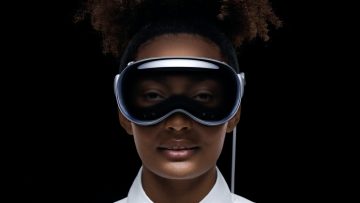As a Vision Pro enthusiast who keeps track of all of Apple’s moves that might be related to the spatial computer, I can’t help but wonder whether Apple will quietly upgrade the wearable device to the M3 System-on-Chip (SoC) that’s about to power several late 2023 Macs. I can see both the pros and cons of Apple giving the Vision Pro a last-minute upgrade.
But maybe it’s not a last-minute upgrade. Maybe it’s what Apple wanted all along.
The M2 chip is good enough
The M2 chip that powers the MacBook Air and other Macs should be good enough for the Vision Pro. Remember that Apple uses two different chips inside the spatial computer.
The M2 handles the operating system and apps, while the R1 chip manages all the data that comes from the sensors. That includes internal and external cameras as well as microphones.
I explained that the Vision Pro should deliver a fast computing experience, and that’s not solely because of the processor choice. Unlike the smartphone and computer, which require moving your hands on a screen or keyboard/mouse combo, the Vision Pro tracks your gaze and hands continuously.
By following your eyes, the Vision Pro might let you open and interact with apps much faster than traditional phones and computers. I’m sure it might be confusing at first, and eye-tracking can cause issues. But once you’ve mastered it, you’ll experience computing at the speed of thought.

You don’t need the M3 for that. However, the next-gen chip should be faster and more energy-efficient. Also, the optics would not be in the Vision Pro’s favor. The expensive, sophisticated computer would not pack Apple’s best possible chip once the M3 rolls out, even though a usable Vision Pro setup will likely cost around $4,000.
Remember that the M3 chip is built on TSMC’s 3nm process. The only other similar SoC that powers the iPhone 15 Pro modes is the A17 Pro. There’s nothing like it powering Windows or Android devices.
iPhone 15 Pro manufacturing cost estimates indicate the A17 Pro is more expensive than the A16 Bionic. Therefore, I’d expect the M3 to be more costly than the M2. The device configuration that Apple announced at WWDC is already expensive enough. Apple didn’t share all the hardware specifics, leaving RAM and storage a mystery.
There’s also Apple’s 3nm chip manufacturing problem. It might not be able to manufacture enough M3 units for its Macs, as it prioritizes A17 Pro production. With the Vision Pro expected to sell in low volumes, the effort of bringing the M3 to the spatial computer might not be warranted.
What if Apple wanted the M3 inside the Vision Pro?
Then there’s the Vision Pro’s mysterious release date. If it’s imminent, Apple can’t possibly change the manufacturing process to swap the M2 for the M3. Not to mention that Apple plans device manufacturing in great detail, and last-minute changes seem unlikely.
Unless Apple always wanted to use the M3 chip inside the Vision Pro but never wanted to tip its hand.
When Apple unveiled the Vision Pro at WWDC, it also unveiled the M2 15-inch MacBook Air. The M3 chip wasn’t ready. If Apple had gone on to mention the Vision Pro will pack the M3 chip, it might have impacted 15-inch MacBook Air sales.
This could explain the massive delay between the Vision Pro and the actual release date. Sure, Apple wants developers to get on board, and it’s giving them time to make Vision Pro apps. Also, manufacturing the wearable computer can’t be easy or cheap.
But what if Apple scheduled it this way to surprise Vision Pro buyers with an upgrade to a more efficient, more powerful M3 chip? What if Monday’s “Scary Fast” event will deliver such a one more thing surprise? Since the Vision Pro is a computer, Apple could also use the occasion to announce the Vision Pro’s release date.

Given the M3 performance rumors out there and the A17 Pro speed, I’d expect the base M3 chips to be incredibly powerful. They should at least match the A17 SoC when it comes to power. And they’ll get better cooling inside Macs and the Vision Pro, which are larger devices than the iPhone 15 Pros.
Think about it: the Vision Pro isn’t going to be a device you upgrade every year. You’d want it to last several years. That’s where the M3 could be even more useful than the M2. You’d want the powerful GPU performance the A17 Pro teases. And the extra energy efficiencies could bump up battery life, even if only slightly. After all, it’s not like you can upgrade the spatial computer down the road.
I’ll point out there are no rumors to support this theory. It’s just speculation from yours truly. I’ll get the Vision Pro regardless of the M-series chip running the show. But I’d love it if Apple could give the Vision Pro a big M3 upgrade before its launch.








